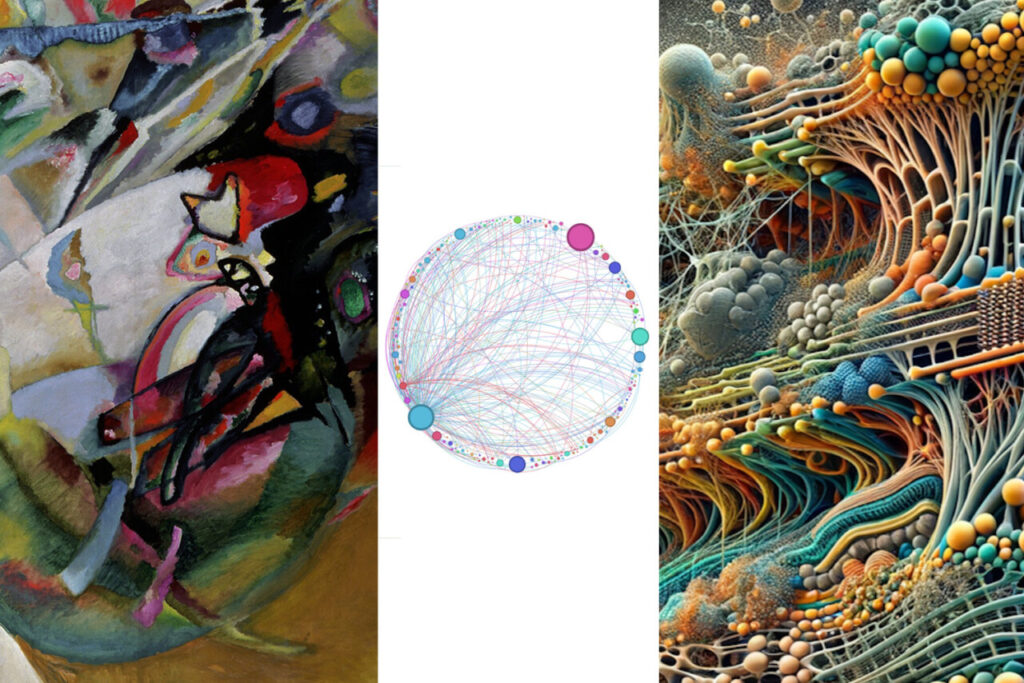Imagine using artificial intelligence to compare two seemingly unrelated creations — biological tissue and Beethoven’s “Symphony No. 9.†At first glance, a living system and a musical masterpiece might appear to have no connection. However, a novel AI method developed by Markus J. Buehler, the McAfee Professor of Engineering and professor of civil and environmental engineering and mechanical engineering at MIT, bridges this gap, uncovering shared patterns of complexity and order.
“By blending generative AI with graph-based computational tools, this approach reveals entirely new ideas, concepts, and designs that were previously unimaginable. We can accelerate scientific discovery by teaching generative AI to make novel predictions about never-before-seen ideas, concepts, and designs,†says Buehler.
The open-access research, recently published in Machine Learning: Science and Technology, demonstrates an advanced AI method that integrates generative knowledge extraction, graph-based representation, and multimodal intelligent graph reasoning.
The work uses graphs developed using methods inspired by category theory as a central mechanism to teach the model to understand symbolic relationships in science. Category theory, a branch of mathematics that deals with abstract structures and relationships between them, provides a framework for understanding and unifying diverse systems through a focus on objects and their interactions, rather than their specific content. In category theory, systems are viewed in terms of objects (which could be anything, from numbers to more abstract entities like structures or processes) and morphisms (arrows or functions that define the relationships between these objects). By using this approach, Buehler was able to teach the AI model to systematically reason over complex scientific concepts and behaviors. The symbolic relationships introduced through morphisms make it clear that the AI isn’t simply drawing analogies, but is engaging in deeper reasoning that maps abstract structures across different domains.
Buehler used this new method to analyze a collection of 1,000 scientific papers about biological materials and turned them into a knowledge map in the form of a graph. The graph revealed how different pieces of information are connected and was able to find groups of related ideas and key points that link many concepts together.
“What’s really interesting is that the graph follows a scale-free nature, is highly connected, and can be used effectively for graph reasoning,†says Buehler. “In other words, we teach AI systems to think about graph-based data to help them build better world representations models and to enhance the ability to think and explore new ideas to enable discovery.â€
Researchers can use this framework to answer complex questions, find gaps in current knowledge, suggest new designs for materials, and predict how materials might behave, and link concepts that had never been connected before.
The AI model found unexpected similarities between biological materials and “Symphony No. 9,†suggesting that both follow patterns of complexity. “Similar to how cells in biological materials interact in complex but organized ways to perform a function, Beethoven’s 9th symphony arranges musical notes and themes to create a complex but coherent musical experience,†says Buehler.
In another experiment, the graph-based AI model recommended creating a new biological material inspired by the abstract patterns found in Wassily Kandinsky’s painting, “Composition VII.†The AI suggested a new mycelium-based composite material. “The result of this material combines an innovative set of concepts that include a balance of chaos and order, adjustable property, porosity, mechanical strength, and complex patterned chemical functionality,†Buehler notes. By drawing inspiration from an abstract painting, the AI created a material that balances being strong and functional, while also being adaptable and capable of performing different roles. The application could lead to the development of innovative sustainable building materials, biodegradable alternatives to plastics, wearable technology, and even biomedical devices.
With this advanced AI model, scientists can draw insights from music, art, and technology to analyze data from these fields to identify hidden patterns that could spark a world of innovative possibilities for material design, research, and even music or visual art.
“Graph-based generative AI achieves a far higher degree of novelty, explorative of capacity and technical detail than conventional approaches, and establishes a widely useful framework for innovation by revealing hidden connections,†says Buehler. “This study not only contributes to the field of bio-inspired materials and mechanics, but also sets the stage for a future where interdisciplinary research powered by AI and knowledge graphs may become a tool of scientific and philosophical inquiry as we look to other future work.â€Â
Source: Read MoreÂ

